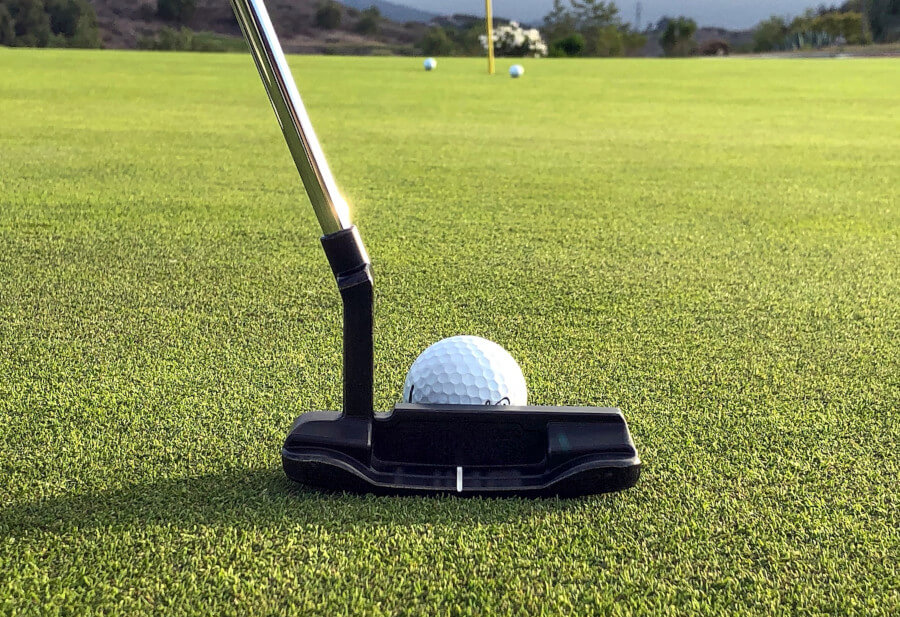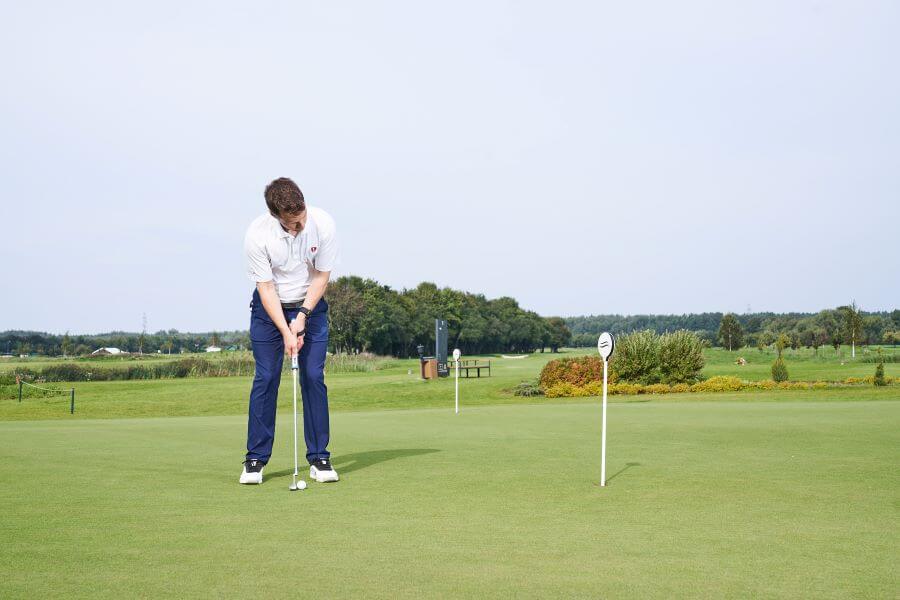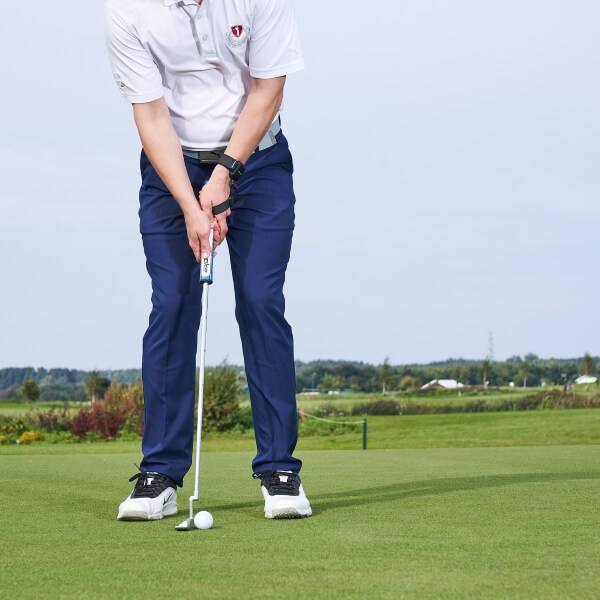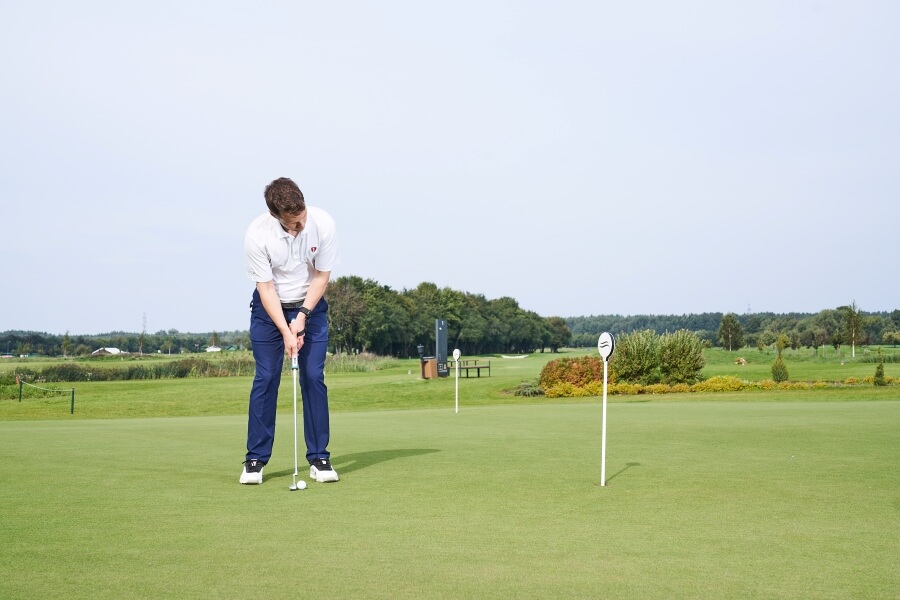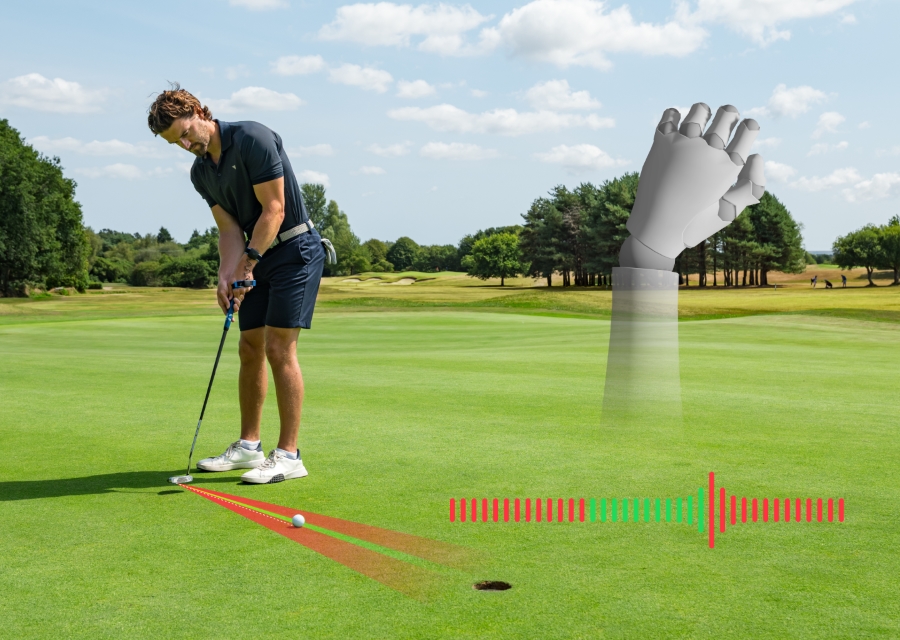How to Pitch in Golf: 12 Actionable Tips & Drills Every Golfer Should Know
Scoring your best in golf depends heavily on the sharpness of your short game.
Shots from 100 yards and in account for more than half the strokes in a typical round, and pitch shots make up a significant share of those.
Becoming confident with pitching isn’t about quick tricks or shortcuts; it’s about understanding proper technique and putting in consistent practice.
Golf Pitching Tips (Key Takeaways)
You could spend days learning about how to pitch a golf ball properly. In fact, even professionals are continually seeking ways to pitch the ball properly. If you have just a few minutes, take this information about pitching in golf.
- Wrist control matters: A flat to slightly extended lead wrist helps prevent thin or heavy strikes.
- Setup is key: Use a neutral grip, slightly open stance, and about 60% weight on the lead foot.
- Backswing and follow-through: Keep the backswing compact, accelerate through impact, and let the club release naturally.
- Distance control: Build a wedge chart using consistent swing lengths to manage carry distances with confidence.
- Use HackMotion: Track and train wrist positions for more consistent pitching mechanics.
Contents
- 12 Pitching Tips to Improve Your Short Game
- 1. Body Lines
- 2. Posture, Width and Weight
- 3. Ball Position
- 4. Keep Shoulders Level
- 5. Get the Right Grip
- 6. The First Few Feet Back
- 7. Little Rotation Back, Big Rotation Down
- 8. Use HackMotion to Improve Your Pitching
- 9. Keep it Moving
- 10. Get Dialed in with Distance Control
- 11. Equipment – Choose Your Weapon
- 12. Understanding Bounce and Grind
12 Pitching Tips to Improve Your Short Game
Pitching is a short game shot where the ball carries most of the way to the target and lands softly, usually with some spin. It’s different from a chip, which rolls more than it flies.
Pitch shots are especially useful when you need to carry an obstacle like a bunker, when you’re more than 20 yards from the green’s edge, or when fast greens demand a higher, softer shot. They also come into play when you’re short-sided and need more stopping power.
The key is knowing when to pitch instead of chip.
A common rule of thumb: when you can’t putt, chip, and when you can’t chip, pitch. Mastering both shots makes it much easier to choose the right option and save strokes around the green.
1. Body Lines
Getting set up is always step one. With pitching, the setup is slightly different from a full swing because the goal is to launch the ball higher and land it softly.
The loft of the club will do most of the work, but proper body position helps it happen.
When setting up, your body lines should be slightly open to the target. By body lines, that means your:
- Feet
- Knees
- Hips
- Shoulders
This subtle adjustment promotes a slight out-to-in path and allows you to keep rotating through impact while posting up on the lead leg.
2. Posture, Width and Weight
A solid strike on pitch shots comes down to small setup adjustments. By narrowing your stance, adjusting your posture, and shifting your weight, you create the right conditions for a clean, descending hit.
Here’s what to focus on:
- Stance: Slightly narrower than a full swing, about half a step inside shoulder width. Go narrower for shorter pitches, a bit wider for longer ones.
- Posture: Keep a light knee flex, similar to a full swing, but bend a little more from the hips since you’re using a shorter club.
- Weight: Set about 60% of your weight on the lead side. This encourages a descending strike and crisp contact.
3. Ball Position
The key to hitting great pitch shots lies in how consistent you are in your setup.
Ensuring you do the correct things consistently in your setup will help you make a good move into the ball throughout your swing.
Your ball position is a critical part of that.
Make sure you always set yourself with the ball just ahead of the buttons on your shirt, or just forward of your sternum.
This, combined with your weight slightly forward into your lead leg, will ensure a good strike at the bottom.
In addition, you will want to have very little shaft lean at address. Position your hands right under your belt buckle, so the club shaft is as close to straight up and down as possible.
These setup suggestions will also allow the club to bounce as intended.
4. Keep Shoulders Level
In a full swing, the trail shoulder naturally sits lower than the lead shoulder to help sweep the ball off the turf.
For pitch shots, though, the shoulders should be set more level at address.
This adjustment, combined with keeping a bit more weight forward, helps the club bottom out just in front of the ball, a key ingredient for clean, consistent contact.
5. Get the Right Grip
How you grip the club matters. As we all know, our hands are our only connection to the club.
The control of the face of the club in pitching comes through our hands.
The 2011 PGA Teacher of the Year, Mike Malaska, has one of the best explanations of how to slightly adjust your grip for hitting pitch shots.
You want your grip slightly less in the fingers. It is more diagonal in the lead hand than you have it with chipping and putting.
This slight grip change allows for less hinge as you go back and through. Too much hinge of the wrists can spell trouble at impact with pitch shots.
You want to be more shallow as you come into the ball, so the club can work the way it was designed to.
6. The First Few Feet Back
The first few feet of the backswing set the tone for a good pitch shot.
Keep the hinge in your wrists minimal, just enough to control the club without getting handsy. The takeaway should move slightly outside the target line, creating a steeper backswing that naturally shallows out on the way down.
As the club reaches parallel to the ground, check that the face hasn’t rolled shut.
A simple checkpoint: the toe should point toward the sky. This keeps the face square and helps deliver the club consistently through impact.
7. Little Rotation Back, Big Rotation Down
In pitching, you will have little rotation back, but plenty of rotation as you swing down and through to your finish.
You should feel as though your arms are connected to your body and driving the backswing. These are shorter shots, so they do not need a big backswing and a lot of rotation of the body going back.
As you start down in transition, you will want to feel very active with your body. The body rotation on the downswing and on through the finish is the driver of this shot.
There is very, very little hand and wrist action in the through swing. It is all about the body’s rotation. You will finish your swing with your hands and the club in front of your chest.
8. Use HackMotion to Improve Your Pitching
Wrist action is one of the biggest factors in pitching consistency. Too much extension in the lead wrist leads to thin shots, while too much flexion causes the club to dig and hit behind the ball.
HackMotion makes it easier to train the right motion:
- Collect a baseline: Track your typical wrist positions and compare them to your best strikes.
- Tag and review: Mark your good shots to analyze what your wrist angles looked like at impact.
- Check consistency: For pitching, a flat to slightly extended lead wrist is ideal. Too flexed or too extended usually leads to misses.
- Train with feedback: Use HackMotion’s audio cues to stay within a set range and groove repeatable motion.
9. Keep it Moving
A common problem for many golfers in pitching is decelerating through impact and into the finish. To hit solid pitch shots, the body must keep moving and rotating.
If the body slows, the hands take over and move ahead of the swing, leading to inconsistent contact.
10. Get Dialed in with Distance Control
Distance control is one of the most important skills in pitching and one of the toughest for many golfers.
A reliable way to improve is to work backward from your full swing with each wedge and create a personal distance chart.
Start by hitting 10–12 full-swing shots with each wedge in your bag (for example, a 52°, 56°, and 60°) and record the average carry distance. Then, use your backswing length, measured like hands on a clock, to map out shorter swings while maintaining the same tempo.
Here’s an example of how the numbers might break down:
| Club | Full Swing (11–1) | 10–2 Swing | 9–3 Swing | 8–4 Swing |
|---|---|---|---|---|
| 52° Wedge | 120 yards | 100 yards | 80 yards | 60 yards |
| 56° Wedge | 100 yards | 80 yards | 60 yards | 40 yards |
| 60° Wedge | 80 yards | 60 yards | 40 yards | 20 yards |
For even more precision, choke down an inch on each club and retest. The shorter swing length will fill in extra yardages, giving you more options around the green.
This is the level of detail professionals use, and knowing your numbers by heart gives you complete confidence in pitching distance control.
11. Equipment – Choose Your Weapon
Having the right tools in the bag is what separates great short-game players from the rest.
Many professionals carry four wedges, usually a pitching wedge plus three others with consistent loft gaps. A common setup might include 52°, 56°, and 60°.
This type of gapping provides players with reliable options for different distances and trajectories, making it easier to control carry distance and select shots around the green.
12. Understanding Bounce and Grind
Just like loft gapping, wedge bounce, and grind play a big role in pitching performance. Every golfer has different swing tendencies and turf interactions, so matching your wedges to your style is important.
Bounce: The angle between the club’s leading edge and the sole.
- More bounce = higher leading edge, better for soft turf or bunkers.
- Less bounce = lower leading edge, better for firm turf or tight lies.
- Bounce adds forgiveness, helping you still strike the ball cleanly even when contact isn’t perfect.
Grind: The shaping or removal of material from the sole.
- Different grinds change how the club interacts with the turf.
- Allows for versatility in spin, trajectory, and shot creativity.
The right bounce and grind combination makes wedge play more consistent and forgiving, giving you confidence on a variety of lies around the green.
In Summary
Like every part of the game, there are no shortcuts to becoming a better pitcher of the ball. Solid technique, the right equipment, and plenty of practice are what lead to consistent results.
Since 60–65% of all golf shots come from 100 yards and in, sharpening your pitching is one of the fastest ways to lower scores.
HackMotion can help speed up the process by tracking your wrist angles and giving instant feedback on whether you’re repeating the positions that lead to solid strikes. Instead of guessing, you can train with clear data and build confidence in one of the most important areas of the game.
Put these tips into practice, use HackMotion to guide your progress, and you’ll start saving strokes the next time you step onto the course.









